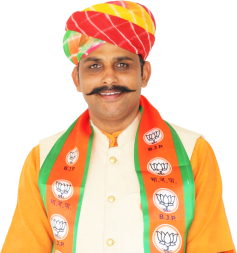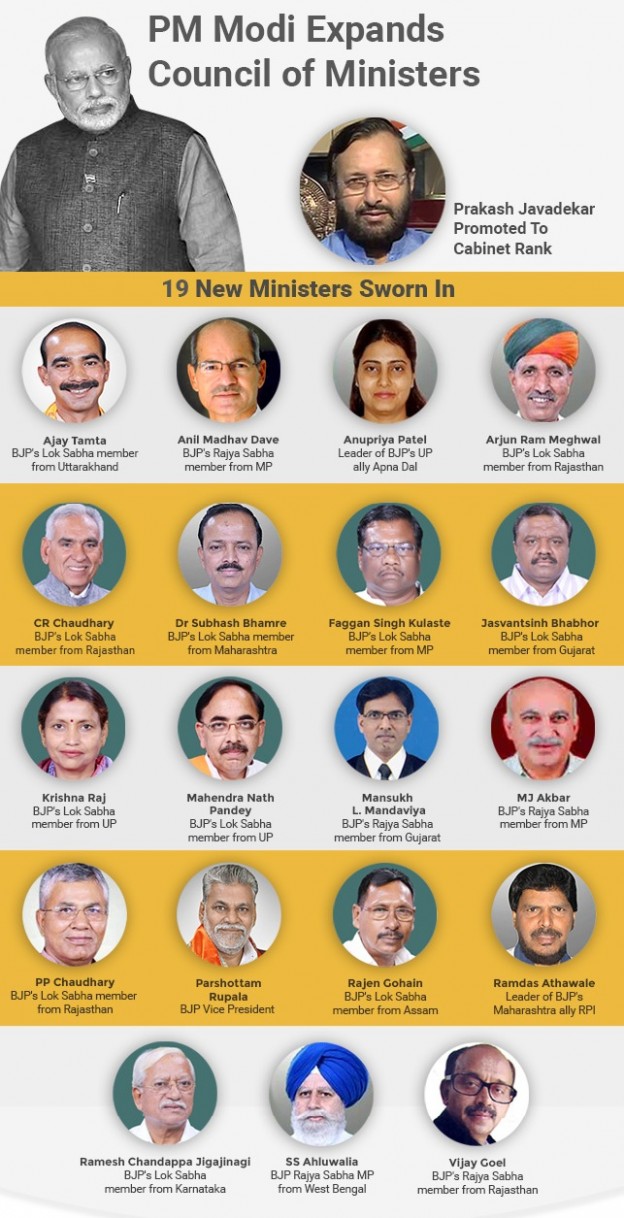Prime Minister Narendra Modi expands his council of members by 19 new ministers. The much-awaited expansion of Modi’s Cabinet will see major changes in portfolios of some ministers.
The expansion framework laid out by Modi comes after a survey and selection process. The people were assessed on the value they would bring to the Union Council of Ministers. There were several rounds of consultations with senior party colleagues including BJP chief Amit Shah, Union Home Minister Rajnath Singh and Finance Minister Arun Jaitley on a wide range of issues before expanding his Council of Ministers. Modi brings the “doers and performers” who would deliver on his vision of development and good governance and his central priority of Gaon, Garib and Kisan. According to government sources, the main key elements to be kept in mind while choosing the Ministers were professional expertise, State Government experience, Central Government experience, fresh talent, Political experience, education, social diversity and geographical diversity.
The last cabinet expansion had taken place in November 2014, by adding four Cabinet ministers, three Ministers of State (Independent Charge) and 14 Ministers of State, increasing the total size of the ministry from 45 to 66 ministers.
The list of new ministers reveals a mix of professional expertise. While PP Chaudhary (BJP) is a senior Supreme Court advocate with over four decades of experience in constitutional litigation, Subhash Ram Rao Bhamre (BJP) is a well-known doctor with a super specialization in cancer surgery and MJ Akbar (BJP) is a well-known journalist turned politician. Arjun Ram Meghwal is a former bureaucrat from Rajasthan and Anil Madhav Dave is a published author and environmental activist. Faggan Singh Kulaste and Vijay Goel have been central ministers, while Ramesh Jigajinagi, Purushottam Rupala, Jasvantsinh Bhabhor and Mahendra Nath Pandey have served as senior ministers in their States. They are all BJP leaders. There is also fresh, young talent in Apna Dal’s Anupriya Patel and BJP’s Mansukh Mandaviya, who has worked in the agriculture sector in Gujarat.
The expansion also focuses on more representation for backward castes and Dalits. Anupriya Patel is a leader of the Kurmi caste. Mr. Bhabhor and Mr. Kulaste are members of Scheduled Tribes, while Mr. Tamta, Ramdas Athalwale, Arjun Ram Meghwal, Ramesh Chandappa Jigajinagi and Krishna Raj, a BJP leader from UP, are members of Scheduled Castes.
The Cabinet was, however, leaner than the one headed by former Prime Minister Dr. Manmohan Singh during the UPA regime. The strength of Dr. Singh-led UPA stood at 78 after its final reshuffle in October 2012. According to the Constitution, the total number of ministers in the Council of Ministers must not exceed 15 percent of the total number of members of the Lok Sabha i.e. 82.









